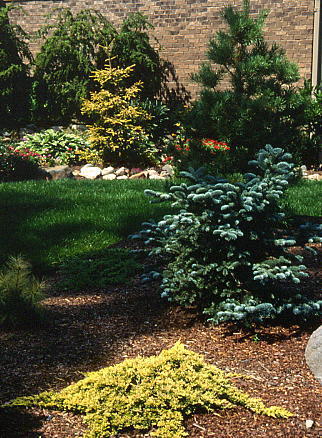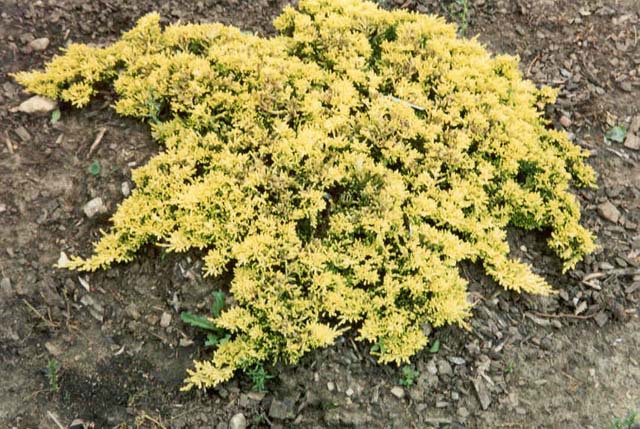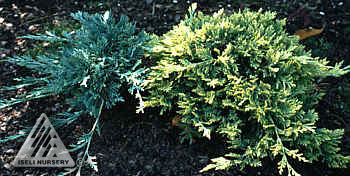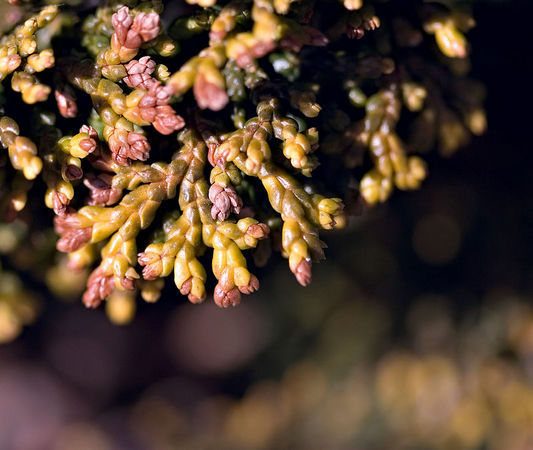Juniperus horizontalis 'Mother Lode' is a creeping, flat, low-growing, coniferous, evergreen shrub which features brilliant gold foliage changing to a golden bronze in winter. Grown primarily as a ground cover, the soft, feathery, scale-like foliage of this unique cultivar will eventually spread 8-10' (2.4 x 3 m) but will only rise 4" (.1 m) off the ground. Creeping branches root as they grow along the ground. Fleshy seed cones (berries) are infrequently produced. Species is commonly called creeping juniper.
Grow in average, dry to medium wet, well-drained soil in full sun. Adaptable to a wide range of soils, but prefers a dryish, sandy soil. To cover a large area, plant 3-4' (.9 x 1.2 m) apart. Tolerant of hot, dry conditions.
An excellent ground cover which is relatively low-maintenance once established. Also a good rock garden plant. Effective in mass plantings around homes, foundations and shrubs. Can be useful for erosion control on slopes. Interesting small accent or specimen value due to gold foliage color.
A bright, golden yellow sport of `Wiltonii', `Mother Lode' holds bright color all summer in full or partial sun. Fall brings a deep yellow-orange becoming tinged with plum by winter for all-season attraction. Use as a focal point, draping over stone, or mass planting as a golden carpet.
Rich gold foliage, turning yellow-bronze in winter; prostrate ground cover or draping over wall; full sun to partial shade; 2-3" (.05 - .07 m) high. [Exerpt from Dwarf & Unusual Conifers Coming of Age A Guide to Mature Garden Conifers
By Sandra McLean Cutler]




